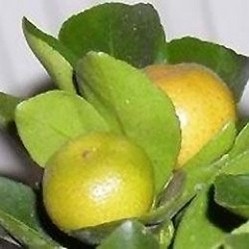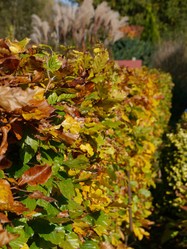As mentioned, the Calamondin fruit resembles a small orange. If you cut it across, the inside will be starred like an orange (rather than divided into four like a kumquat) and it contains seeds. When the fruit first develops it is green, but then turns yellow and finally bright orange as it ripens. It gets sweeter (or more accurately, less sour) as it ripens. I know people who eat the green fruit for the extremely sour taste, but personally I don't.
The rind is extremely thin, and grating a Calamondin for its peel is easier said than done, unless you want juice everywhere. However it can be peeled fairly easily by hand when ripe, as the rind is loose. The rind, which is edible, is sweet tasting. The flesh of the fruit and the juice is extremely tart.
Eaten whole the two make a slight and interesting contrast, but if the juice is drained off for cooking you'd want to use it to replace lemon juice rather than orange in recipes. We have used it, with sugar, on pancakes.
A healthy treat - Nutrition
High in Vitamin C and Viatmin A, containing Iron and other nutrients, the Calamondin is good for heath:












 Alternatives to Tweetdeckon 03/06/2015
Alternatives to Tweetdeckon 03/06/2015
 Computer Game reviewson 02/28/2015
Computer Game reviewson 02/28/2015
 The Bard's Taleon 02/04/2015
The Bard's Taleon 02/04/2015
 Domeboon 02/04/2015
Domeboon 02/04/2015


Comments